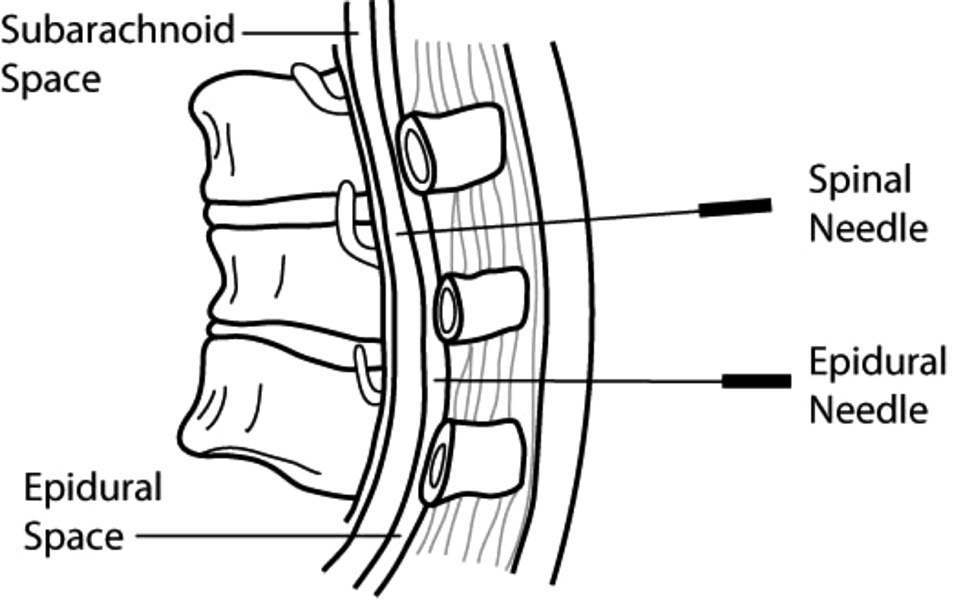Pain relief options
Epidurals
Why are epidurals used during labour and birth?
Epidurals are used for vaginal and caesarean births, because they allow the mother to stay awake and alert during the baby’s birth.
What are the advantages of an epidural?
- epidurals are usually a very effective form of pain relief
- epidurals take away the pain of contractions
- epidurals can be effective for hours and can be increased in strength if you need to have an emergency caesarean birth
- in a long labour, an epidural can allow you to sleep during the active stage of labour, saving energy in preparation for pushing in second stage of labour
- if your blood pressure is high, an epidural might be recommended by your doctor.
More information:
What happens when I have an epidural?
Epidural is a local anaesthetic, which is injected into your back (not the spinal cord).
An anaesthetist will put the epidural in. This usually takes about 20 minutes.
- a drip will be put in your hand or arm
- to place the epidural, you will be asked to either sit up or lie on your side
- cold antiseptic solution will be painted onto your lower back to clean the skin
- local anaesthetic will be injected into your back first – this may cause a stinging sensation for a few seconds
- you will feel a pushing sensation in your back while the epidural is inserted
- it is very important that you keep still while the epidural is inserted, to avoid any damage to the nerves in your spine
- the epidural needle is not left in the back - just a thin tube (called an epidural catheter) remains to deliver the epidural medications.



What can I expect for an epidural?
An epidural causes muscle weakness in the legs, so women who have had an epidural in labour are confined to bed.
This also means:
- an epidural can take away the sensation to pass urine so you will need a urinary catheter (a thin tube) to drain your urine
- you will have an IV (intravenous) drip in your hand to give you extra fluids
- a cardiotocography (CTG) machine will continuously monitor the baby’s heartbeat
- your blood pressure will be monitored closely
- in second stage of labour, you may still feel the urge to push, but the sensation is reduced so you may require an assisted delivery for your birth.
Frequently asked questions – epidurals in labour
Will an epidural hurt?
The answer depends on who you ask. Some women describe an epidural placement as creating a bit of discomfort in the area where the back was numbed, and a feeling of pressure as the small tube or catheter was placed.
When might an epidural not be recommended for pain relief?
There are certain situations where an epidural would not be recommended. For example, medical complications, bleeding disorders, infections, history of back surgery.
Discuss any concerns you may have with your midwife or doctor who will make a referral for you to speak to an anaesthetist prior to your birth.
When can I have an epidural?
Typically, epidurals are placed when the cervix is dilated to 4–5 centimetres or more and you are in true active labour. The timing is determined by your unique experience in labour. You will need to discuss this with your midwife or doctor at the time.
Can an epidural slow down my labour?
Yes. An epidural can cause your labour to slow down and make your contractions weaker. If this occurs, you may be given intravenous oxytocin to help speed up labour. The second stage of labour can be prolonged and assisted birth may be required in certain situations.
Can an epidural affect my baby?
Research shows that epidurals do not directly affect your baby. The drugs used in epidurals do cross the placenta but are considered safe and have minimal effect on baby.
What are the risks of an epidural?
Epidurals have been routinely used for many years and are widely accepted as an effective method of pain relief after surgery, during labour and childbirth. However, as with many medical procedures, there are some associated risks that, although small, you should be aware of before deciding whether to have an epidural.
Risks and benefits of epidurals: Queensland Government – Epidural pain relief for your labour
More information: Pregnancy, Birth and Baby – Epidural
Next section: Breastfeeding 101
In this guide:
- Managing pain in labour
- Transcutaneous electrical nerve stimulation (TENS)
- Sterile water injections (SWIs)
- Nitrous oxide (gas)
- Morphine
- Epidurals
- Previous ( https://www.qld.gov.au/health/children/pregnancy/antenatal-information/pain-relief-options/morphine )


